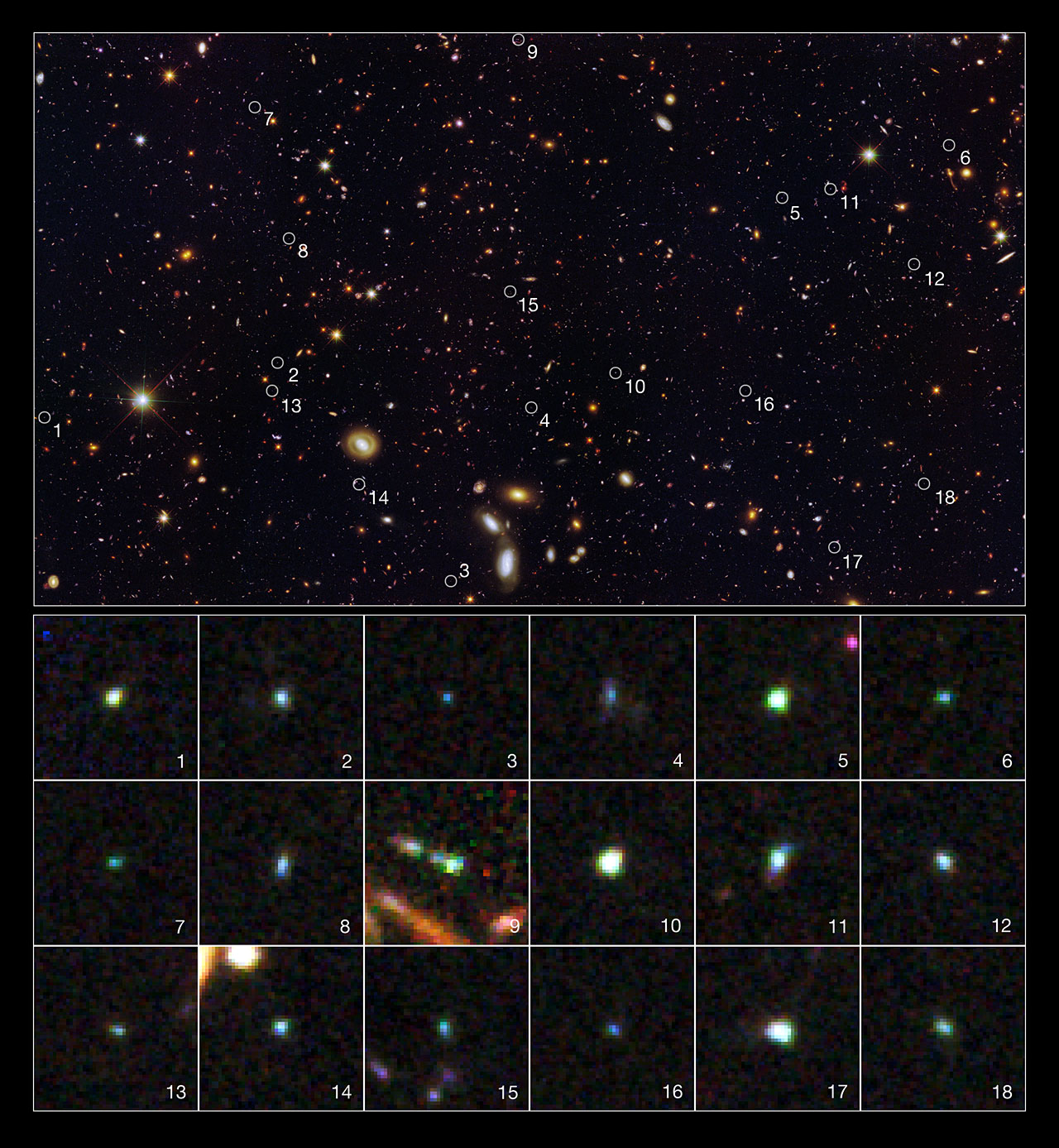Strange Hyperactive Galaxies Spotted by Hubble Telescope

Astronomers have discovered a strange population of tiny, distant galaxies forming stars at a surprisingly rapid clip.
The researchers used the Hubble Space Telescope to spot the 69 hyperactive dwarf galaxies, which are about 9 billion light-years away from Earth. They're churning out stars so fast that their stellar population would double in just 10 million years. By contrast, it took the Milky Way 1,000 times longer to double its number of stars, researchers said.
The new results are unexpected, since they're somewhat at odds with other recent studies of ancient dwarf galaxies.
"Those studies suggest that star formation was a relatively slow process, stretching out over billions of years," study co-author Harry Ferguson, of the Space Telescope Science Institute (STScI), said in a statement. Ferguson is co-leader of the survey that found the dwarf galaxies, which is called the Cosmic Assembly Near-infrared Deep Extragalactic Legacy Survey (CANDELS).
"The CANDELS finding that there were galaxies of roughly the same size forming stars at very rapid rates at early times is forcing us to re-examine what we thought we knew about dwarf galaxy evolution," Ferguson added. [Hubble photo & video of new dwarf galaxies]
Tiny, active galaxies
The newly discovered dwarf galaxies are about 100 times smaller than the Milky Way, researchers said. Since it took their light 9 billion years to reach Hubble, the instrument is peering back at the early universe.
Get the Space.com Newsletter
Breaking space news, the latest updates on rocket launches, skywatching events and more!
Star formation rates were higher back then than they are now, but the newfound dwarf galaxies' rates are still extraordinarily high. Hubble spotted the galaxies because radiation from their young, hot stars lit up the gas around them like a fluorescent sign, researchers said.
Dwarf galaxies are the most common type of galaxy in the universe, and astronomers believe this rapid starbirth phase is likely an important step in their evolution. The team hopes to learn more about this evolution with more Hubble data.
"As our observations continue, we should find many more of these young galaxies and gather more details on their star-forming histories," said co-author Anton Koekemoer, also of STScI.
The study will appear in a forthcoming issue of the Astrophysical Journal.
A cosmic mystery
The study suggests that hyperactive dwarf galaxies were quite common 9 billion years ago. But why they were forming stars at such rapid rates back then is still a mystery, researchers said.
Computer simulations suggest that star formation in small galaxies may be episodic, triggered initially by the cooling of gas, which collapses to form stars. Some of these stars eventually die in violent supernova explosions, heating and blowing away surrounding gas. But eventually the gas cools and collapses again, continuing the cycle, researchers said.
But simulations didn't predict such high star-forming activity.
"While these theoretical predictions may provide hints to explain the star formation in these newly discovered galaxies, the observed 'bursts' are much more intense than those reproduced by the simulations," said study lead author Arjen van der Wel of the Max Planck Institute for Astronomy in Heidelberg, Germany.
NASA's $8.8 billion James Webb Space Telescope, an infrared observatory scheduled to be launched in 2018, could help solve the mystery, researchers said.
"With Webb, we’ll probably see even more of these galaxies, perhaps even pristine galaxies that are experiencing their first episode of star formation," Ferguson said. "Being able to probe down to dwarf galaxies in the early universe will help us understand the formation of the first stars and galaxies."
Follow SPACE.com for the latest in space science and exploration news on Twitter @Spacedotcom and on Facebook.
Join our Space Forums to keep talking space on the latest missions, night sky and more! And if you have a news tip, correction or comment, let us know at: community@space.com.

Space.com is the premier source of space exploration, innovation and astronomy news, chronicling (and celebrating) humanity's ongoing expansion across the final frontier. Originally founded in 1999, Space.com is, and always has been, the passion of writers and editors who are space fans and also trained journalists. Our current news team consists of Editor-in-Chief Tariq Malik; Editor Hanneke Weitering, Senior Space Writer Mike Wall; Senior Writer Meghan Bartels; Senior Writer Chelsea Gohd, Senior Writer Tereza Pultarova and Staff Writer Alexander Cox, focusing on e-commerce. Senior Producer Steve Spaleta oversees our space videos, with Diana Whitcroft as our Social Media Editor.









